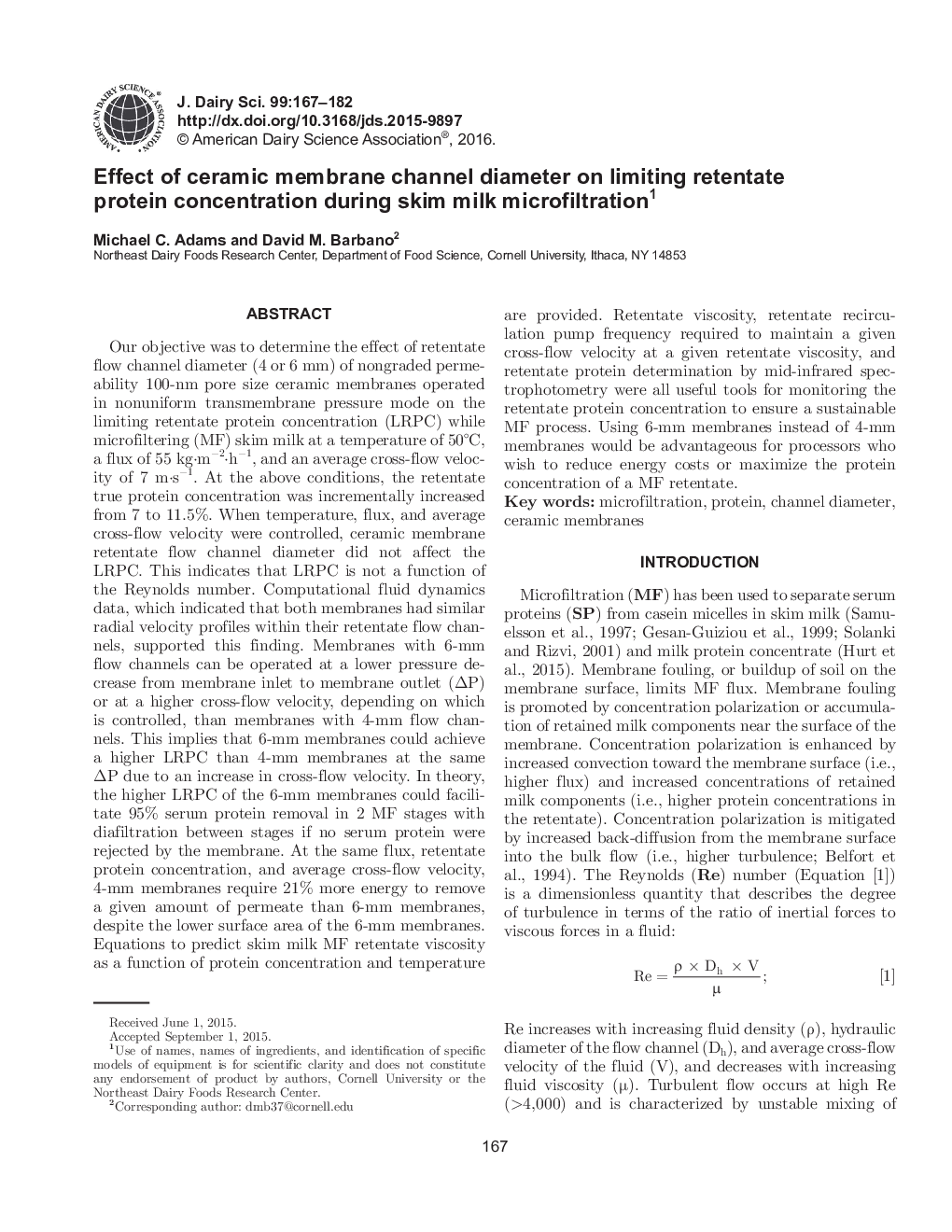| کد مقاله | کد نشریه | سال انتشار | مقاله انگلیسی | نسخه تمام متن |
|---|---|---|---|---|
| 10973992 | 1108021 | 2016 | 16 صفحه PDF | دانلود رایگان |
عنوان انگلیسی مقاله ISI
Effect of ceramic membrane channel diameter on limiting retentate protein concentration during skim milk microfiltration1
دانلود مقاله + سفارش ترجمه
دانلود مقاله ISI انگلیسی
رایگان برای ایرانیان
موضوعات مرتبط
علوم زیستی و بیوفناوری
علوم کشاورزی و بیولوژیک
علوم دامی و جانورشناسی
پیش نمایش صفحه اول مقاله

چکیده انگلیسی
Our objective was to determine the effect of retentate flow channel diameter (4 or 6 mm) of nongraded permeability 100-nm pore size ceramic membranes operated in nonuniform transmembrane pressure mode on the limiting retentate protein concentration (LRPC) while microfiltering (MF) skim milk at a temperature of 50°C, a flux of 55 kg·mâ2·hâ1, and an average cross-flow velocity of 7 m·sâ1. At the above conditions, the retentate true protein concentration was incrementally increased from 7 to 11.5%. When temperature, flux, and average cross-flow velocity were controlled, ceramic membrane retentate flow channel diameter did not affect the LRPC. This indicates that LRPC is not a function of the Reynolds number. Computational fluid dynamics data, which indicated that both membranes had similar radial velocity profiles within their retentate flow channels, supported this finding. Membranes with 6-mm flow channels can be operated at a lower pressure decrease from membrane inlet to membrane outlet (ÎP) or at a higher cross-flow velocity, depending on which is controlled, than membranes with 4-mm flow channels. This implies that 6-mm membranes could achieve a higher LRPC than 4-mm membranes at the same ÎP due to an increase in cross-flow velocity. In theory, the higher LRPC of the 6-mm membranes could facilitate 95% serum protein removal in 2 MF stages with diafiltration between stages if no serum protein were rejected by the membrane. At the same flux, retentate protein concentration, and average cross-flow velocity, 4-mm membranes require 21% more energy to remove a given amount of permeate than 6-mm membranes, despite the lower surface area of the 6-mm membranes. Equations to predict skim milk MF retentate viscosity as a function of protein concentration and temperature are provided. Retentate viscosity, retentate recirculation pump frequency required to maintain a given cross-flow velocity at a given retentate viscosity, and retentate protein determination by mid-infrared spectrophotometry were all useful tools for monitoring the retentate protein concentration to ensure a sustainable MF process. Using 6-mm membranes instead of 4-mm membranes would be advantageous for processors who wish to reduce energy costs or maximize the protein concentration of a MF retentate.
ناشر
Database: Elsevier - ScienceDirect (ساینس دایرکت)
Journal: Journal of Dairy Science - Volume 99, Issue 1, January 2016, Pages 167-182
Journal: Journal of Dairy Science - Volume 99, Issue 1, January 2016, Pages 167-182
نویسندگان
Michael C. Adams, David M. Barbano,